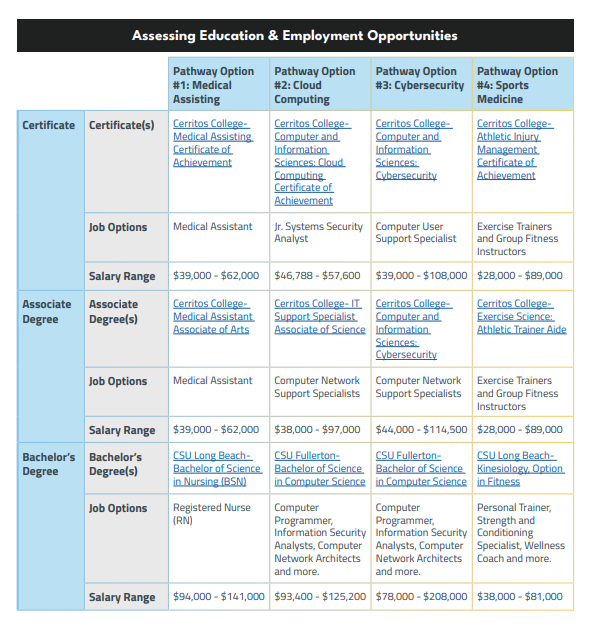You have /5 articles left.
Sign up for a free account or log in.

Dual-enrollment courses, when delivered effectively, can close equity gaps in attainment and completion for college students.
Stigur Mar Karlsson/Heimsmyndir/E+/Getty Images
Dual enrollment is one sector of undergraduate education that has continued to grow in recent years, jumping 10 percent in spring 2024 and accounting for 28 percent of undergraduate enrollment increases, according to the National Student Clearinghouse Research Center.
Completing college-level courses while enrolled in high school can be one way to encourage students who may not otherwise pursue higher education to participate and can also expedite students’ time to degree with less debt. Previous research shows dual-enrollment participants are more likely to transfer and earn a bachelor’s degree compared to their peers, as well.
A new report from the Los Angeles Regional Consortium (LARC) and the Career Ladders Project (CLP) details one initiative to building and scaling dual-enrollment pathways and the elements of a successful partnership between colleges and high schools. The research highlights how dual enrollment can promote student success but requires intentional structure and outreach to student groups traditionally underserved by dual enrollment.
The background: LARC supports 19 community colleges and their high school partners in the county to build pathways for socioeconomic mobility. In spring 2024, LARC partnered with CLP to create an institute for practitioners to improve dual-enrollment pathways.
The report focuses on six pairs of high school districts and community colleges within the Los Angeles region that participated in the Dual Enrollment Pathway Institute last spring, designed by CLP. The road map was funded by LARC.
The six teams had dual-enrollment leads, administrators, pathway coordinators and instructors from colleges and high schools.
How it worked: The groups were charged with three key areas of creating a dual-enrollment pathway: assessing the partnership, selecting a pathway and planning for implementation.
Before starting to build something new, practitioners and stakeholders assessed current dual-enrollment legislation, partnership agreements and the teams’ roles and functions. California has legislation that creates parameters for dual enrollment, so compliance with regulation is critical.
Identifying which responsibilities belong to the school versus the college was also important, particularly with counseling, advising and providing technical support. Collaborative efforts that can increase student success include outreach and enrollment support, accommodations and basic needs security.
As partners considered future plans for dual enrollment, getting the scope of the landscape of offerings presently available was helpful. Teams analyzed course offerings, instructors, modality, schedules and student demographics.
Then came the opportunity to evaluate how pathways could be built by expanding available offerings or creating new ones. “Fundamentally a pathway should be made up of connected courses, experiences, and support services that enable students to advance over time to higher levels of education and training,” according to the report.
Partnerships also consider sequences of courses that:
- Encourage students to stay on the pathway throughout high school
- Support groups of students who may be shut out of current opportunities
- Help students complete high school graduation, college certificate and degree requirements
- Connect career paths with certificate or degree completion for students to follow
- Align with local educational and employment opportunities
Cerritos College created a chart that outlines students’ pathway options and how different educational attainment levels are associated with various job opportunities.

The report notes students’ interests and preferences should be factored into development of new or expanded dual-enrollment pathways to ensure they are utilized and accessible to learners. Similarly, instructor preference and qualifications play a key role in delivering content.
After establishing the pathway, leadership should create a pathway map that denotes courses offered, sequence of courses and how they will staff each course. This guide can also consider student services and activities to support student success including supplemental instruction, peer mentorship and intervention and drop support.
“Determining when the classes will be offered and who will teach them are some of the most technical aspects of planning a dual enrollment pathway,” according to the report. Some students will face barriers to participation depending on when and how the classes meet, such as if they have limited transportation or internet access.
Equitable access to dual enrollment also requires intentional outreach, awareness and enrollment practices. Multilingual students or those with disabilities are least likely to participate in dual enrollment, so targeted outreach to these learners can be one strategy.
In addition, partners should establish metrics for student and program success, such as participation, retention, success, completion and matriculation rates.
Is your college creating new dual-enrollment pathways for students? Tell us about it here.




